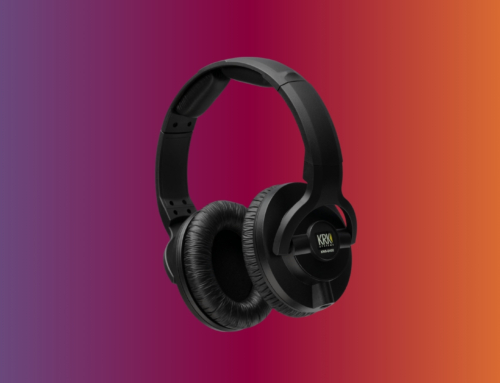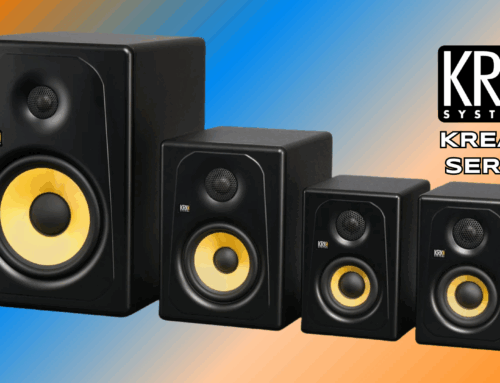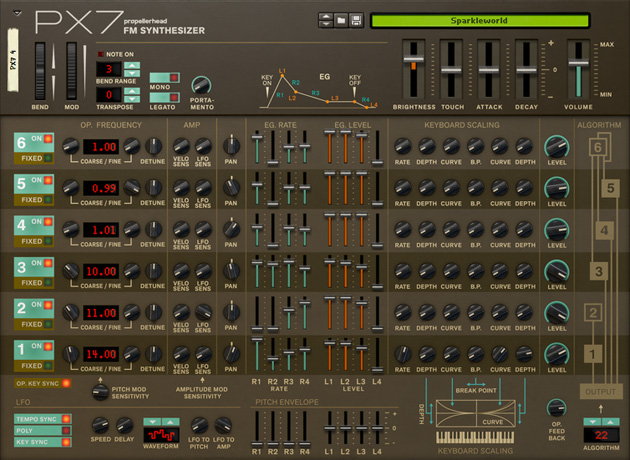
Propellerhead’s Reason software is well-known for its diverse and expertly-crafted array of built-in virtual instruments and devices, from the Dr. Octo Rex loop slicer to the massive-sounding Thor Polysonic Synthesizer. One of the newest offerings, the PX7 FM Synthesizer, is so powerful, complex, nuanced, and yet easy to use that it will easily find itself at home in almost any recording project. Based on and expanding upon the now legendary Yamaha DX7 digital FM synthesizer, the PX7 rack device allows the producer full command of a six-operator frequency modulation synthesizer loaded with hundreds of presets and the ability to import even more. If you know nothing about FM synthesis, that’s okay – the controls make it so easy you don’t even have to. But just for fun, I’ll a little time to explain what FM synthesis is and why it’s useful.
Many popular synthesizers in EDM, new wave, classic rock, and other genres are based on the old-school classic analog subtractive design, which simply combines simple waveforms (sine waves, square waves, saw waves, and triangle waves) to create complex tones that offer a huge, warm, and very recognizable synthetic sound. Amplitude modulation (AM) synthesis, though used very infrequently, involves modulating the volume of a soundwave at such a high frequency that an entirely new style of waveform is created (see image below).
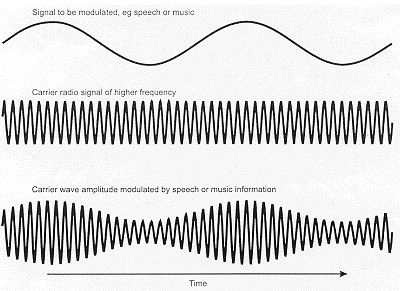
Frequency modulation (FM) synthesis works on a similar principle, but has the modulating wave control the pitch of the audio wave, rather than the volume (see below). Discovered by John Chowning of Stanford University in 1967, FM synthesis didn’t really make its way into commercial synthesizers until Yamaha’s DX7 digital synthesizer, released in 1983. The DX7 and its characteristic sounds would come to influence much of the 1980’s music scene, with semi-realistic synthetic brass, string, bass, choir, and drum sounds finally able to be realized in a way never thought possible in the days of analog subtractive synthesizers.
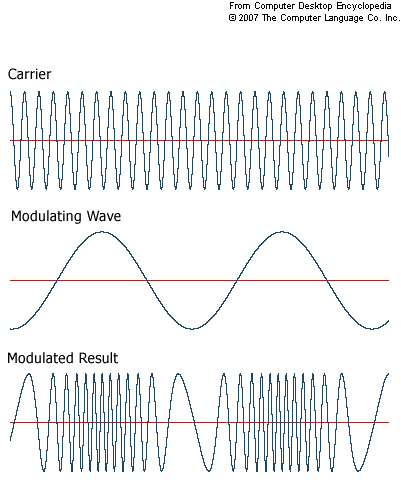
Reason’s PX7 synthesizer unlocks all of the possibilities realized by its Yamaha predecessor and more, without the need for any knowledge of the complex inner workings of FM synthesizers. The giant array of buttons and knobs available for tweaking certainly allow ultimate customizability if you know what you’re doing, but if you don’t, that’s okay because Propellerhead has included hundreds of preset patches for use in any genre, from jazz to orchestral to drum ‘n’ bass and dubstep. The Propellerhead website also offers a tool to convert old Yamaha DX7 patches to Reason PX7 patches, which I find extremely cool.
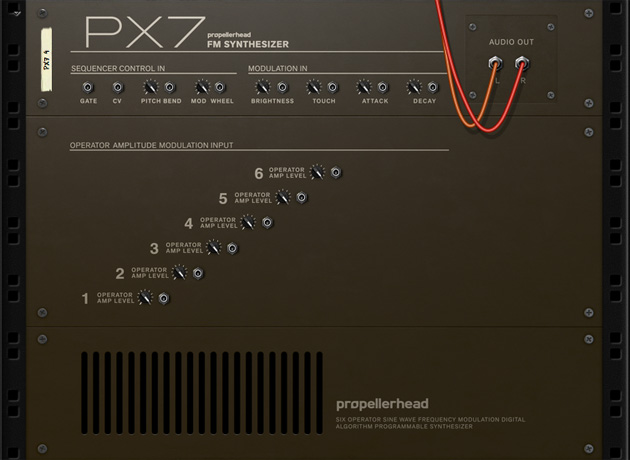
For those interested, the PX7 includes six different sine wave operators which can be combined in 32 different modulating combinations to produce a stunning array of unique sounds. Each operator also has its own envelope generator and of course frequency controls. The six operators aren’t the only modulation sources available – in fact, the PX7 allows CV modulation control from any other Reason rack device which has a CV output. And yes, that means that other PX7 units can modulate each other… which makes my head spin a little bit. Luckily, Propellerhead decided to include some Combinator patches as well which combine devices inside a black box for you.
The sheer amount of preset content available with the Reason PX7 FM synthesizer justifies the cost entirely – especially when compared to the price and relative limitations of a Yamaha DX7! Reason consistently features high-quality, high-featured instruments with a nearly infinite number of control combinations allowing for constant production of new community patches and Propellerhead refills. With devices like the PX7, who needs VST’s?

